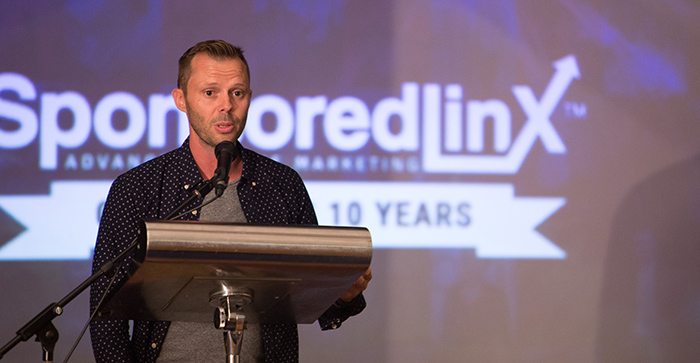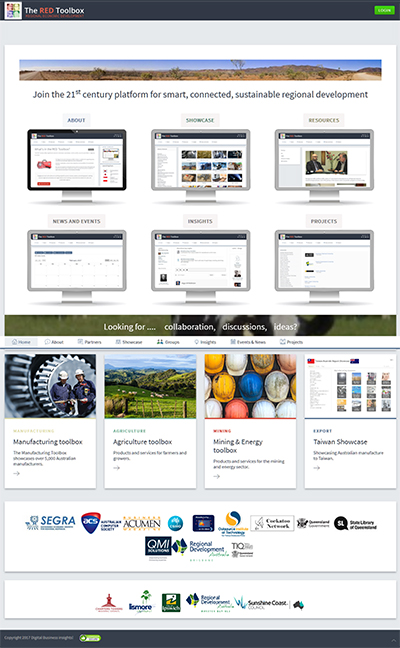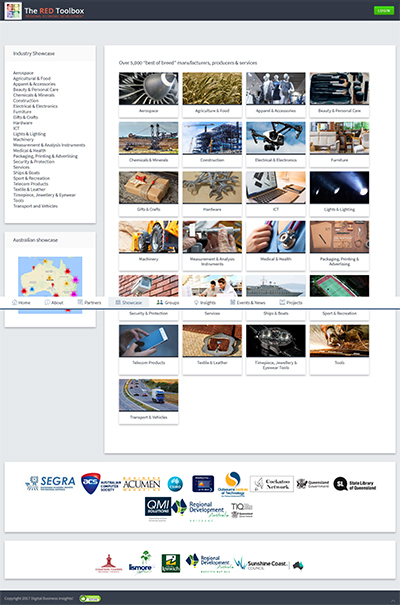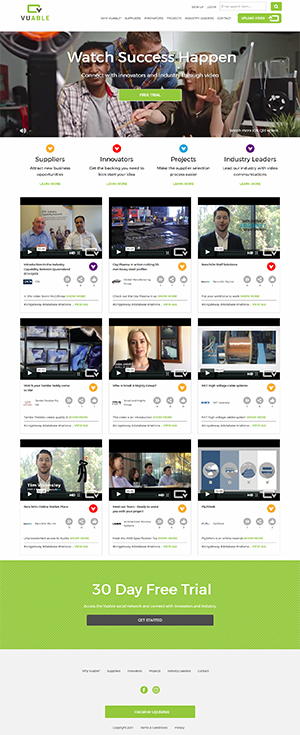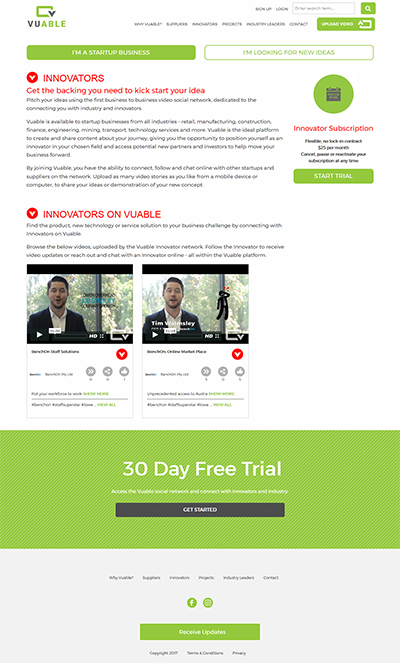Digital Business insights by John Sheridan >>
I HAVE ASKED this question before. And I am asking it again.
Because there is a lot in this simple question that remains unanswered.
We are all familiar with seeds. But if we weren’t, and somebody was trying to tell us that there was great value and potential in a handful of small, dried up, wrinkled specks of dust, we would probably prove hard to convince. 
Because what is a seed? Does it in any way demonstrate its true potential? No.
Because the seed carries within itself the programming to turn brown dirt, and colourless air and water into something so different it is hard to believe the seed had any part in it.
Acorn into mighty oak. Apple pip into apple tree. A small, hard, brown husk grows into a supple green plant…covered with bright coloured flowers.
We don’t think twice about this miracle. We have learned the relationship. We appreciate the transformation. We understand the time scale involved.
But what about the seeds of potential planted by the digital revolution?
We are not so good at estimating the value of the unfamiliar and the new. We measure it by what was…not by what might be.
We measure by things that have been done within the constraints and restrictions of a familiar environment not by what might be done in a new digital environment without those restrictions.
TWO ISSUES
There are two issues in play here.
One is the potential of the seed. The other is the potential of the seed planted into a new and changed environment. A new interconnected, collaborative and integrated, networked environment.
What is the potential of a network? What is the RoI of something without edges and boundaries?
Nobody really knows and most people lack imagination. They need help. Pictures. Stories. Examples.
How do you define the potential of something if you can’t describe where it starts and finishes, begins and ends… because it doesn’t?
What is the potential of a digitally interconnected sector, region or country?
What is the RoI of that seed?
Is that novel? Is that something new? Of course it is. We have never seen that before. It is a new potential expressed in a new condition.
And extremely difficult to judge or evaluate.
Because…
There is a vast gap between the technological “connection”, “collaboration” and “integration” of the digital revolution and the associated “thinking” that goes with it.
The digital revolution is full steam ahead. The connected “thinking” still lags way, way behind.
We live in an increasingly joined up and connected world, but we still run our societies using disconnected, disjointed strategies – across regions (geography), industries (sectors), government (departments) and time (political timescale). We don’t always think of them as disconnected, but they are.
HOW SMART ARE OUR CITIES, REALLY?
We talk about smart cities yet continue to build dumb ones. A city is not smart because the parking meters or the traffic lights are smart.
A city is only smart as a result of joined up thinking across all societal dimensions and we haven’t yet begun to consider what that might mean.
Is it smart to allow cheap cladding to “pretty up” buildings and create firetraps? The architect, developer, builder and council planning department are all participants in the approval process. It all joins up. But the thinking doesn’t. And disaster is the result.
Manufacturers select cheap and vulnerable chips for their products and consumer devices and create the hacker paradise that we all now live in. And your fridge, your car, your router, your modem, your camera, your meters, your phone, your credit card, your children’s toys, your garage door, your library books or your office key are all ready to play. All because we used 25c chips versus $5 chips and a new Y2K disaster beckons.
Only this one will actually happen.
The revolution is outstripping the thinking. The revolution outstrips the governance and management. And in a joined up world, we are all shareholders, and responsibility doesn’t stop at the front door.
Legally it might in the short term, but we can do better than that.
We can start by “joined up” thinking.
We can start by talking “between” as well as “within”.
We can start by sharing and collaborating.
DIGITAL REVOLUTION OVERRUNS US
For the digital revolution powers on, ignoring departmentalism, nationalism and parochialism, continuing to join and connect.
The revolution is all-inclusive not all-exclusive. That is what makes it so disruptive. The connectivity creates new options with no reference to existing historic relationships.
So the whole 'C suite' has to invest time for joined up thinking. It’s not the CIO’s job. Nor the CMO, the CFO or the CEO alone. It has to be an informed collaborative discussion. The whole cabinet. The whole council.
And that means looking at how the digital revolution does disrupt, might disrupt and how it can offer new opportunity. It means collaboration with others. It means generating joined-up ideas and trying them. Planting seeds and germinating them.
What is the RoI of a seed? There are two points of view. The brown shrivelled view (what it is) and the green, leafy view (what might be).
Current thinking. Keep digging up the seed to see. There you go…still brown and shrivelled – no RoI there.
With any seed, there is an element of vision, hope, expectation and trust in a process. Demand the RoI too soon and there isn’t any. Measure it by past example and it doesn’t make sense either.
In a connected 21st century world where the implications of universal connection are impossible to map let alone evaluate, it is difficult for 19th century thinkers to keep up. They ask the wrong questions.
19th century thinkers probably weren’t even very good in the 19th century when the first commercially viable locomotive hit the rails. The top speed of the Blutcher was 4 mph…not very impressive, but ultimately it led to British Rail. So what was the ROI of the Blutcher?
And Stephenson also understood that ultimately all rails would connect into a railway network.
What was the RoI of the railway network in the 19th century? Was it the value to the railway company of passenger and freight? Or was it what happened as a result of the railways connecting the isolated towns and villages across a country transforming commerce, jobs, and creating new industries like tourism?
WHAT IS THE ROI OF A SEED?
Business is not just about shareholder value. It is about the sustainability of shareholder value. And we are all shareholders.
Farming value, not mining value. Focusing on the medium and longer-term, not short term, next quarter bottom line.
Most farmers have always understood this. Value adding. Conserving, collaborating, investing and improving, applying a sustainable approach to agriculture that can be passed onto future generations.
Digital enforces a slow but steady shift in attitude. Not yet for everybody, but apparent in those early adopters of digital technology, the innovators and the young digital natives.
This 20 percent of organisations - the agile, the smart, the informed and the adaptable – recognise opportunity when it stares them in the face.
The RoI of a seed.
The other 80 percent actually have no choice in the matter, but have failed to recognise that fact…so far. The digital currents of transformation carry us all in one direction only.
Out into the digital ocean of change. We are caught in an enormous digital riptide carrying us out to sea faster than we can possibly swim in the other direction, back to the safe, solid land of the 20th century, when direction was clear, plans could be made and followed through, KPIs measured and MBAs meant something.
There is no solid land in the digital revolution. We are all at sea.
That is the intriguing thing about this revolution. We are impacted and affected no matter what we do.
The only intelligent option is to use the currents of change for personal, collective and collaborative advantage. And that means understanding what is happening. “Getting it”. Making and taking time to really understand the options and opportunities, not abdicate responsibility to somebody else.
HUMAN BARRIERS
The major barriers and blockages to the digital revolution are nearly all human, nearly all attitudinal and therefore difficult to modify and change.
Command and control is redundant. But countless managers wrestle with this new fact every day. Unsuccessfully.
Business loyalty has become hollow. Loyalty now only follows authenticity.
And millions of CEOs still face this disruptive revolution without full comprehension, unwilling to make time to understand what and why and how. “I’m too busy”, they say, from the bus as it disappears over the cliff.
But revolutions take time. And patience is required.
You can't whip a tree and make it grow. The early adopters will adopt. But then...
This revolution involves technology (tools) AND people (users).
Technology is an enabler. But it has to be coupled with comprehensive understanding, imagination and enterprise.
And the process of change management is not like architecture where we draw a plan, then assemble inorganic elements into a structure. The digital revolution demands an approach more akin to gardening where we never really know what is going to "come up".
We have a general idea of what might be but then have to work with the reality as it emerges. Then water, fertilise, prune.
That is when we see the ROI of a seed. Not the picture on the seed packet.
This is uncomfortable for those who think everything can be controlled. Gardening is intelligent, sensitive management…not control.
The technology is the "easy" bit. But people are hard.
Worse still (or better still), we are now entering a stage of connecting organisations, regions, states, countries, supply chains and ecosystems and that requires even more understanding and a very different collaborative approach that is inclusive and recognises the new currency of authenticity, honesty, consistency and trust.
And the traditional brokers are broken.
Industry associations, councils, governments have to seriously consider what it means to collaborate with others, and to move beyond merely talking about it, into action…because most current actions are reinforcing the status quo.
Talking about collaboration and working together, and doing it are different things. There are lots of words and discussions…but little action.
That is why we built the RED Toolbox - http://theredtoolbox.org
It is a platform for discussion. A platform for action. A platform for collaboration. A platform for joined up thinking. A platform to support productive industries.
We are at the next big "bump in the road" in our digital evolution. Get this right and there can be profound benefits in our societies.
It seems to be especially hard for politicians and business groups and industry associations. The polarisation of all viewpoints into left and right, liberal and conservative doesn’t ring true in a connected world. There are good ideas from both side and all sides. We need the best of both.
It is no longer about where the idea came from. Who cares? The issue now becomes “Is it a good idea?” measured against all the wicked problems we face as a society.
GAME CHANGED
The game has changed. Competition has morphed into 'coopetition', into shared value, into collaboration.
Ants operate collaboratively for the good of the nest. The queen does not control what happens in the nest. She lays the eggs. She creates the resource.
The ants forage, find food and manage threats with all the “decisions” being made at the small group level. The ants collaborate to solve problems. There is no central command and control. Yet the result of collaboration at this level is remarkably successful.
Collaboration at grass roots is already happening, not just in Australia, but across the planet. It is a very natural activity. Individuals and groups are collaborating to solve problems. Now we just need to scale up. And take this collaborative approach to the next level.
We can learn a lot from ants. They are successful. They have collaborated for 100 million years. And if the humble ant can manage this so successfully, then so can we.
John Sheridan is CEO of Digital Business insights, an organisation based in Brisbane, Australia, which focuses on helping businesses and communities adapt to, and flourish in, the new digital world. He is the author of Connecting the Dots and getting more out of the digital revolution. Digital Business insights has been researching and analysing the digital revolution for more than 15 years and has surveyed more than 50,000 businesses, conducting in-depth case study analysis on more than 350 organisations and digital entrepreneurs. Now DBi is turning that research into action through a series of digital business development platforms, the first of which launched in 2016, the Manufacturing Toolbox. DBi has now also launched a series of international online trade showcases, promoting Australian goods and services to specific countries and promoting use of those showcases in those countries. The first, just launched, is the Australia-Taiwan Trade Showcase. Coming soon are trade showcases for Japan, Hong Kong-China, Korea, Japan, Indonesia, Singapore and India. Australia's Regional Economic Development (RED) Toolbox has now been launched at http://theredtoolbox.org.
http://www.db-insights.com/



